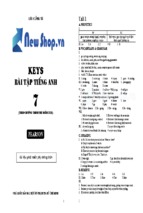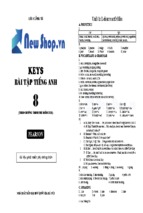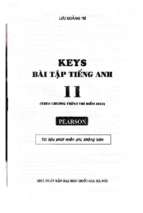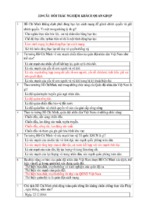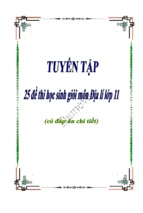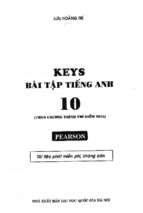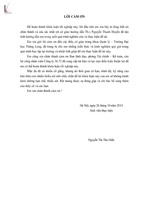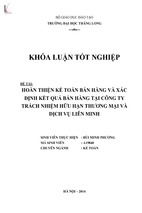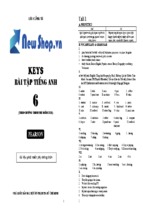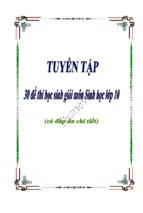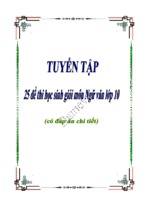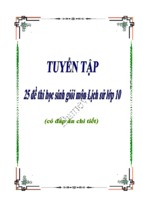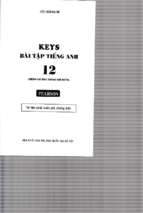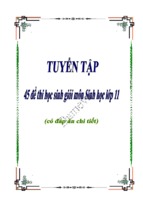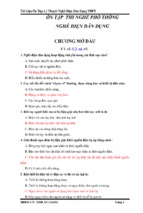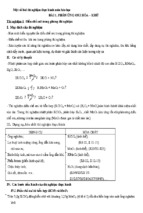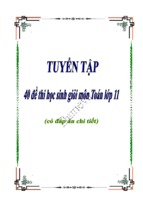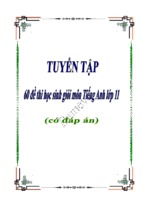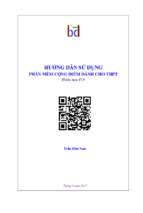SỞ GIÁO DỤC VÀ ĐÀO TẠO ĐỒNG NAI
Đơn vị TRƯỜNG THPT CHUYÊN LƯƠNG THẾ VINH
Mã số: ................................
SƠ LƯỢC LÝ LỊCH KHOA HỌC
––––––––––––––––––
I. THÔNG TIN CHUNG VỀỀ CÁ NHÂN
1. Họ và tên: CHÂU HỒỒNG LAM
SÁNG KIẾN KINH NGHIỆM
2. Ngày tháng năm sinh: 18/08/1983
INTEGRATED SKILLS
3. Nam, nữ: Nữ
IN WRITING LESSONS
4. Đ chỉ: 468/19/5, P. Tân
TOịaIMPROVE Hiệp, Biên Hòa, Đồồng Nai INPUT
LANGUAGE
5. Điện thoại:
6. Fax:
(NR);
ĐTDĐ: 01223953854
E-mail:
[email protected]
7. Chức vụ:
8. Nhiệm vụ được giao: Giảng dạy và chủ nhiệm lớp chuyên Anh
Người ng THPT CHÂU HỒNG LAM
9. Đơn vị cồng tác: Trườthực hiện:Chuyên Lương Thêế Vinh
Lĩnh vực nghiên cứu:
II. TRÌNH ĐỘ ĐÀO TẠO
- Phương pháp dạy học bộ môn: TIẾNG ANH
Học vị cao nhâết: Thạc syỹ
Năm nhận băồng: 2007
Có đính kèm:
Chuyên ngành đào tạo: Phương pháp giảng dạy
Mô hình
Phần mềm
Phim ảnh
Hiện vật khác
III.KINH NGHIỆM KHOA HỌC
Lĩnh vực chuyên mồn có kinh nghiệm: giảng dạy Tiêếng Anh
Sồế năm có kinh nghiệNăm học: 2016 - 2017
m: 12 năm
1
Các sáng kiêến kinh nghiệm đã có trong 5 năm gâồn đây:
SƠ LƯỢC LÝ LỊCH KHOA HỌC
I.
THÔNG TIN CHUNG VỀỀ CÁ NHÂN
1. Họ và tên: CHÂU HỒỒNG LAM
2. Ngày tháng năm sinh: 18 - 08 - 1983
3. Nam, nữ: Nữ
4. Địa chỉ: 468/19/5, KP3, Tân Hiệp, Biên Hòa, Đồồng Nai
5. Điện thoại:
(CQ)/
6. Fax:
E-mail:
[email protected]
(NR); ĐTDĐ: 01223953854
7. Chức vụ:
8. Đơn vị cồng tác: Trường THPT Chuyên Lương Thêế Vinh
II. TRÌNH ĐỘ ĐÀO TẠO
Học vị (hoặc trình độ chuyên mồn, nghiệp vụ) cao nhâết: Thạc syỹ
Năm nhận băồng: 2007
Chuyên ngành đào tạo: Phương pháp giảng dạy tiêếng Anh
III.
KINH NGHIỆM KHOA HỌC
Lĩnh vực chuyên mồn có kinh nghiệm: 12
2
Sồế năm có kinh nghiệm: 12
Các sáng kiêến kinh nghiệm đã có trong 5 năm gâồn đây:
Making speaking lessons in English textbooks more meaningful
CONTENTS
I. RATIONALE
II. IMPLEMENTATION
A. LITERATURE REVIEW
B. METHODOLOGY
1. Sample lesson plans
2. Observation and findings
III. CONCLUSION AND RECOMMENDATIONS
IV. REFERENCES
3
INTEGRATED SKILLS IN WRITING LESSONS TO IMPROVE LANGUAGE
INPUT
I. RATIONALE
Whenever confronted by the question “what English language skills are the
most challenging to you?”, most learners will definitely say they are speaking
and writing skills, the two productive skills in English acquisition. The reasons
bedind this are numerous; however, the major cause is that they lack the
topical language.
After a few lessons, learners of English writing can master the structure a a
certain type of writing, but when it comes to writing practice, the majority of
learners are discouraged from the task by the lack of ideas and the vocabulary
appropriate for a certain topic.
During the first two months of taking charge of the writing skill for the English
class, the author realised that most of the students use inappropriate
vocabulary for the topic given and wrong combination of words or collocation.
In the scope of this paper, the author attemps to suggest a method that could
be considered effective in helping students improve their language input.
4
II. IMPLEMENTATION
A. LITERATURE REVIEW
The importance of vocabulary is central to English language teaching because
without sufficient vocabulary learners cannot express their own ideas. Wilkins
(1972, pp. 111–112) wrote “. . . while without grammar very little can be
conveyed, without vocabulary nothing can be conveyed”. Lewis (1993(p. 89)
wrote “ lexis is the core or heart of language” . As learners develop greater
fluency and expression in English, it is significant for them to acquire more
productive vocabulary knowledge. The concept of a word can be defined in
various ways, but three significant aspects teachers need to be aware of and
focus on are form, meaning, and use. Nation (2001) stated that use involves the
grammatical functions of the word or phrase, collocations that normally go with
it, and finally any constraints on its use, in terms of frequency, level, and so forth.
Teachers teach vocabulary to build students’ knowledge of words and phrases,
helping them learn any and all of these different components assists them in
enhancing their English vocabulary knowledge and use. Jordens , et al
(1996:359) believe that vocabulary is more important than grammar because
people generally use vocabulary and reduce grammar particularly when getting
a message across quickly and precisely is of the utmost importance; like
telegrams, panic situations or times when emotions are very high. Ellis
(1995:42) distinguished between comprehension and acquisition of vocabulary,
Ellis asserts that the acquisition increases with the rise of the number of context
in which the word appears. Learner need enormous encounters with word not
only to consolidate a word accrued knowledge but also master the various type
of word knowledge, Schmitt (2010:36).
Jack and Willy (2002, p.268) assert that there is a close relationship between
vocabulary growth and the amount and variety of meaning-focused input. They
also stress that vocabulary learning through reading and listening is an essential
strand of a language course. This can be done by providing large quantities if
suitably graded input, and by providing language- focused activities to support
it. Jack and Willy (2002, p.268) also add that spoken production of vacabulary
items helps learning. According to the main findings of the research into spoken
communicative activities by Newton (1995), Joe (1995) and Joe, Nation, and
Newton (1996), the written input to a communicative task has a major effect on
what vocabulary is used and negotiated during the task. Learners are able to
provide useful information to each other on most of the vocabulary in a typical
communicative task; that is, if someone in a group does not know a particular
word, there is likely to be someone else in the group who knows something useful
about it and who can communicate this information effectively. As for writing
5
tasks, Jack and Willy (2002, p.269) confirm that writing requiring the synthesis
of information from several related sources could provide very favorable
conditions for learning from input and strengthening this learning through
generative use in written output.
Therefore, for any essay writing lesson, the teacher should first provide the
students with sufficient vocabulary by using authentic material such as reading
texts and audio/video clips, then ask the students to discuss the topic using the
language from the material. The final stage is to use the language again in their
writing.
B. METHODOLOGY
Subjects
The subjects of the study are 27 students from class 10 English 2, Luong The
Vinh Specialised High School in the school year 2016-2017. Generally speaking,
all the 27 students are rather good at English. However, most of them seem
reluctant to write in English.
Research instruments: experimental teaching, observation.
Procedures
1. Sample lesson plans
Question 1: Many people say that cooking and eating at home is better for
the individual and the family than eating out in restaurants or canteens. Do
you agree or disagree?
Type of lesson: Essay writing - Integrating listening, speaking, and writing
skills.
Level: Upper - intermediate
Aims:
To develop note-taking skill
To practice debating skill
To familiarise students with the topical language that can be used in their
writing
Stage 1
6
Divide the students into six groups.
Ask students to listen to three short clips about the advantages of home-cooked
meals and take notes. Groups 1&2 take notes on clip 1, groups 3&4 clip 2, and
groups 5&6 clip 3.
Ask the students in each group to exchange their notes.
Ask 6 representative from 6 groups to come to the board and write down what
they have heard.
Teacher give the correct answers and highlight the phrases and expressions that
students should pay more attention to.
Children’s development
Develop language skills
Better grades at school/boost academic performance/the family meal setting
was where children learn the most vocabulary/more words makes better
readers
Dramatic behavioural benefits for family meals
Less likely to end up with substance abuse problems/risk-taking behaviours
Better health
Strong association between frequent family meals and better eating habit
Instill healthy eating habits
Good for your family mentally as well as physically
Protective factor of dinners together: from depression to anxiety to sexual
promiscuity to academic achievement to criminal behaviour
Commit to sitting down and having dinner: better communication, parents are
more aware of what their kids are involved in
Willing to talk about their struggles and temptations
Less likely to get involved in risky behaviours
Making family meals a priority
7
Stage 2
Teacher writes the question on the board.
Many people say that cooking and eating at home is better for the
individual and the family than eating out in restaurants or canteens. Do you
agree or disagree?
Ask the students to work in their own group and discuss the question, using the
language they have just learned.
Ask 2-3 students to present their ideas in front of the class.
Stage 3
Ask the students to write an argumentative essay, using the language and ideas
drawn from their group and class discussions.
Question 2: The exploration and development of safe alternatives to fossil
fuels should be the most important global priority today. To what extent do you
agree or disagree? Give reasons for your answer.
Type of lesson: Essay writing - Integrating reading, speaking, and writing
skills.
Level: Upper - intermediate
Aims:
To develop reading skill
To practice debating skill
To familiarise students with the topical language that can be used in their
sparsely populated
extensive use
excessive capacities
writing
deploying these intermittent renewables
immediate hike
Stage 1
make some fundamental shifts in our behaviour
on the rise
enable substantial economic benefits
inextricably linked to
Ask the sudents to read a text about the related topic and fill in the numbered
weaning ourselves off our fossil fuel habit
chews its way
blanks with the phrases provided.
lowest electricity demand
the daily output
The biggest energy challenges facing humanity
reached unprecedented levels
on a path towards
Every day, our species (1) ……………………………… through more than a million
bring in significant revenue
an associated demand
terajoules of energy. That’s roughly equivalent to what we would use if all 7.5
taken a potentially devasting toll
at full capacity
global population swelling 8
rising sea levels
bleak
sucked up
provide an answer
leading contributor
underway
gas guzzling
outstrip
panel of experts
hurdles
billion of us boiled 70 kettles of water an hour around the clock. Or 3,000 times
(2) ……………………………… of Palo Verde nuclear power station in Arizona – one
of the world’s largest – running (3) ……………………………….
With
the
(4)
………………………………
and
industrialisation
(5)
……………………………… in developing nations, humanity’s hunger for energy has
(6) ………………………………. More than half of our energy comes from fossil fuels
extracted from deep within the Earth’s crust. It is estimated that since
commercial oil drilling began in the 1850s, we have (7) ………………………………
more than 135 billion tonnes of crude oil to drive our cars, fuel our power
stations and heat our homes. That figure increases every day.
But our (8) ……………………………… over the past two centuries has (9)
……………………………… on the planet. Burning of coal, oil and gas has been (10)
……………………………… the rising levels of greenhouse gases in Earth’s
atmosphere and is a (11) ……………………………… of climate change. The world’s
scientists agree that we are (12) ……………………………… disaster that can only be
stopped by (13) ………………………………. But that leaves us with a problem. How
do we ensure the lights stay on?
“The energy industry is facing decades of transformation,” according to a
recent report by the World Energy Council. Yet the implications of the changes
underway go far deeper. There are political, economic and social issues at
stake, but it may also require each of us to (14) ……………………………… too.
There can be no doubt that implementing a shift in where we get our energy
from is one of the grand challenges facing our planet today. BBC Future Now
spoke to a (15) ……………………………… about what (16) ……………………………… we
must now overcome and where technology may (17) ……………………………….
Perhaps the greatest issue raised by the scientists, policy experts and
companies we spoke to is how to cope with the (18) ……………………………… in
energy demands expected in the coming decades.
As developing nations become more industrialised, they will need access to
reliable electricity supplies. In countries where development is already (19)
………………………………, energy use will soar as increasing wealth leads to a
swelling middle class and the lifestyle trappings that brings with it.
“With the growth of the middle class in India and China, there will be an (20)
……………………………… for air conditioning. The United Nations'
Intergovernmental Panel on Climate Change suggest that by the middle of the
9
present century, the demand for cooling will (21) ……………………………… the
demand for heating.”
But faced with global agreements to reduce the amount of carbon dioxide
being released into the atmosphere, how will we meet this growing demand
without dooming our ice caps and drowning low-lying regions beneath (22)
………………………………?
In truth, the picture may not be as (23) ……………………………… as it could
be. Around a fifth of the world’s primary energy supply already comes from
renewable sources such as wind, solar, hydro and geothermal.
Hooking up these new energy producers to existing grids won’t be
straightforward, however. “One of the big challenges of (24)
……………………………… like wind and solar is the impact they could have on the
system,” says Watson.
“Transferring electricity from regions that need it least to those that need it
most would help to (25) ………………………………,” says Ksenia Letova, project
manager of the Asian Supergrid at Skoltech Institute for Science and
Technology in Russia. “In countries like Japan and South Korea, the maximum
seasonal load falls on the summer because of (26) ……………………………… of air
conditioning. In the Russian Far East and Siberia this is the period of the (27)
……………………………….”
Using the (28) ……………………………… of neighbouring countries may help to
reduce costs of building new energy projects. For example, there are plans to
develop large-scale wind and solar power stations in the Mongolian Gobi desert
and in northern regions of China. These regions are (29) ………………………………
but allowing the excess energy produced to be exported could (30)
……………………………….
Stage 2
Teacher writes the question on the board.
The exploration and development of safe alternatives to fossil fuels should be
the most important global priority today. To what extent do you agree or
disagree? Give reasons for your answer.
Ask the students to work in their own group and discuss the question, using the
language they have just learned.
10
Ask 2-3 students to present their ideas in front of the class.
Stage 3
Ask the students to write an argumentative essay, using the language and ideas
drawn from their group and class discussions.
2. Observation and findings
Level of using language in writing
Poor
Rather good
Very good
July – August 25/27
2016
2/27
0/27
May 2017
15/27
7/27
5/27
After 9 months of implementation, the author found out that the number of
students who have improved their using of vocabulary in writing has increased
significantly from only 2 at the starting point to a massive 22 students at the
end of the school year.
III. CONCLUSION AND RECOMMENDATIONS
After one year of implementation, the author realises that the students have
become more confident in argumentative essay writing. Most importantly, the
students take more active roles in their learning through reading and listening
to more authentic material given by the teacher and of their own research.
However, the preparation stage is quite a challenge for the teachers because
once you have come up with the idea for your lesson, it is not easy to find a
suitable video to use in that particular lesson. One solution is there should be a
network created for ESL teachers, where they share the videos for particular
topics. This can really help to lift the burden of material shortage that most ESL
teachers have been carrying for years.
IV. REFERENCES
1. Ellis, R. (1999). Learning a second Language through Interaction, pp.46
-47 John Benjamin Amsterdam.
11
2. Jack, C.R. and Willy, A.R. (2002). Methodology in Language Teaching.
Cambridge: Cambridge University Press.
3. Jordens, P .et al (1996). Investigating second language Acquisition,
pp.358 -359, Berlin, Foris publication Holland
4. Joe, A. (1995). Text-based tasks and incidental vocabulary learning.
Second Language Research, 11(2), 149-158.
5. Joe, A., Nation, P., & Newton, J. (1996). Speaking activities and vocabulary
learning. English Teaching Forum, 34 (1), 2-7.
6. Lewis. M. (1993). The Lexical Approach. Hove: Language teaching
Publications.
7. Nation, I.S.P (2001). Learning vocabulary in other in other language, p 9
-21 Cambridge university press.
8. Newton, J. (1995). Text-based interaction and incidental vocabulary
learning: A case study. Second language Research, 11 (2), 159-177.
9. Schmitt ,N. and Jiang , X. (2011). The relation between percentage of
vocabulary knowledge and level of comprehension. The modern
language journal , 95, 1, p. 26.
10.
Vocabulary-Input-in-English-Language-Teaching-Assessing-theVocabulary-Load-in-Spine-Five.
Available
at
http://www.eajournals.org/wp-content/uploads/Vocabulary-Input-inEnglish-Language-Teaching-Assessing-the-Vocabulary-Load-in-SpineFive.pdf, retrieved on May 24, 2017.
11.
Wilkins ,D.A.(1972). Linguistics in Language Teaching. Australia:
Edward Arnold.
12. https://www.youtube.com/watch?v=GFNWbxyivVs
13. https://www.youtube.com/watch?v=Umxbkk2-xLk
14. https://www.youtube.com/watch?v=CLQw_nwrPzc
Người thực hiện
12
Châu Hồồng Lam
13
SỞ GD&ĐT ĐỒỒNG NAI
CỘNG HOÀ XÃ HỘI CHỦ NGHĨA VIỆT NAM
Đơn vị: Trường THPT Chuyên
Độc lập - Tự do - Hạnh phúc
Lương Thêế Vinh
––––––––––––––––––––––––
–––––––––––
Biên Hòa, ngày 24 tháng 05 năm 2017
PHIỀẾU ĐÁNH GIÁ, CHÂẾM ĐIỂM, XỀẾP LOẠI SÁNG KIỀẾN KINH NGHI ỆM
Năm học: 2016 -2017
–––––––––––––––––
Tên sáng kiêến kinh nghiệm: INTEGRATED SKILLS IN WRITING LESSONS TO
IMPROVE LANGUAGE INPUT
Họ và tên tác giả: Châu Hồồng Lam
Chức vụ: .............................................
Đơn vị: Trường THPT Chuyên Lương Thêế Vinh
Họ và tên giám khảo 1: ............................................................ Ch ức v ụ: ......................................
Đơn vị: ...........................................................................................................................................
Sồế điện thoại của giám khảo: .........................................................................................................
* Nhận xét, đánh giá, cho điểm và xếếp loại sáng kiếến kinh nghiệm:
1. Tính mới
.........................................................................................................................................................
.........................................................................................................................................................
.........................................................................................................................................................
Điểm: …………./6,0.
2. Hiệu quả
.........................................................................................................................................................
.........................................................................................................................................................
.........................................................................................................................................................
Điểm: …………./8,0.
3. Khả năng áp dụng
.........................................................................................................................................................
.........................................................................................................................................................
.........................................................................................................................................................
Điểm: …………./6,0.
14
Nhận xét khác (nêếu có): ..................................................................................................
Tổng sồế điểm ....................../20. Xếếp loại: ..................................................................
GIÁM KHẢO 1
SỞ GD&ĐT ĐỒỒNG NAI
CỘNG HOÀ XÃ HỘI CHỦ NGHĨA VIỆT NAM
Đơn vị: Trường THPT Chuyên
Độc lập - Tự do - Hạnh phúc
Lương Thêế Vinh
––––––––––––––––––––––––
–––––––––––
Biên Hòa, ngày 18 tháng 05 năm 2017
PHIỀẾU ĐÁNH GIÁ, CHÂẾM ĐIỂM, XỀẾP LOẠI SÁNG KIỀẾN KINH NGHI ỆM
Năm học: 2016 -2017
–––––––––––––––––
Tên sáng kiêến kinh nghiệm: INTEGRATED SKILLS IN WRITING LESSONS TO
IMPROVE LANGUAGE INPUT
Họ và tên tác giả: Châu Hồồng Lam
Chức vụ: .............................................
Đơn vị: Trường THPT Chuyên Lương Thêế Vinh
Họ và tên giám khảo 2: .......................................................... Ch ức v ụ: ........................................
Đơn vị: .........................................................................................................................................
Sồế điện thoại của giám khảo: ........................................................................................................
* Nhận xét, đánh giá, cho điểm và xếếp loại sáng kiếến kinh nghiệm:
1. Tính mới
.........................................................................................................................................................
.........................................................................................................................................................
Điểm: …………./6,0.
2. Hiệu quả
.........................................................................................................................................................
.........................................................................................................................................................
.........................................................................................................................................................
Điểm: …………./8,0.
3. Khả năng áp dụng
.........................................................................................................................................................
.........................................................................................................................................................
15
.........................................................................................................................................................
Điểm: …………./6,0.
Nhận xét khác (nêếu có): ....................................................................................................
.........................................................................................................................................................
Tổng sồế điểm: .............../20.
Xếếp loại: ................................................................
GIÁM KHẢO 2
SỞ GD&ĐT ĐỒỒNG NAI
Đơn vị: Trường THPT Chuyên
Lương Thêế Vinh
–––––––––––
CỘNG HOÀ XÃ HỘI CHỦ NGHĨA VIỆT NAM
Độc lập - Tự do - Hạnh phúc
––––––––––––––––––––––––
Biên Hòa, ngày 18 tháng 05 năm 2017
PHIỀẾU NHẬN XÉT, ĐÁNH GIÁ SÁNG KIỀẾN KINH NGHIỆM
Năm học: 2016 -2017
–––––––––––––––––
Tên sáng kiêến kinh nghiệm: INTEGRATED SKILLS IN WRITING LESSONS TO
IMPROVE LANGUAGE INPUT
Họ và tên tác giả: Châu Hồồng Lam
Chức vụ: .............................................
Đơn vị: Trường THPT Chuyên Lương Thêế Vinh
Lĩnh vực: (Đánh dâếu X vào các ồ tương ứng, ghi rõ tên bộ mồn ho ặc lĩnh vực khác)
- Quản lý giáo dục
- Phương pháp dạy học bộ mồn: ...............................
- Phương pháp giáo dục
- Lĩnh vực khác: ........................................................
Sáng kiêến kinh nghiệm đã được triển khai áp dụng: Tại đơn vị
Trong Ngành
1. Tính mới (Đánh dâếu X vào 1 trong 3 ồ dưới đây)
- Đêồ ra giải pháp thay thêế hoàn toàn mới, bảo đảm tính khoa học, đúng đăến
- Đêồ ra giải pháp thay thêế một phâồn giải pháp đã có, b ảo đ ảm tính khoa h ọc, đúng đăến
- Giải pháp mới gâồn đây đã áp dụng ở đơn vị khác nhưng chưa từng áp d ụng ở đ ơn v ị
mình, nay tác giả tổ chức thực hiện và có hiệu quả cho đơn vị
2. Hiệu quả (Đánh dâếu X vào 1 trong 5 ồ dưới đây)
- Giải pháp thay thêế hoàn toàn mới, đã đ ược th ực hi ện trong toàn ngành có hi ệu qu ả
cao
- Giải pháp thay thêế một phâồn giải pháp đã có, đã được th ực hi ện trong toàn ngành có
hiệu quả cao
- Giải pháp thay thêế hoàn toàn mới, đã được thực hiện tại đơn vị có hiệu quả cao
- Giải pháp thay thêế một phâồn giải pháp đã có, đã được th ực hi ện t ại đ ơn v ị có hi ệu
quả
- Giải pháp mới gâồn đây đã áp dụng ở đơn vị khác nhưng chưa từng áp d ụng ở đ ơn v ị
mình, nay tác giả tổ chức thực hiện và có hiệu quả cho đơn vị
16
3. Khả năng áp dụng (Đánh dâếu X vào 1 trong 3 ồ mồỹi dòng dưới đây)
- Cung câếp được các luận cứ khoa học cho việc hoạch định đường lồếi, chính sách:
Trong Tổ/Phòng/Ban Trong cơ quan, đơn vị, cơ sở GD&ĐT
Trong
ngành
- Đưa ra các giải pháp khuyêến nghị có khả năng ứng dụng thực tiêỹn, dêỹ thực hiện và dêỹ đi vào
cuộc sồếng:
Trong Tổ/Phòng/Ban
Trong cơ quan, đơn vị, cơ sở GD&ĐT Trong
ngành
- Đã được áp dụng trong thực têế đạt hiệu quả hoặc có khả năng áp dụng đạt hiệu quả trong
phạm vi rộng: Trong Tổ/Phòng/Ban
Trong cơ quan, đơn vị, cơ sở GD&ĐT
Trong ngành
Xếếp loại chung: Xuâết săếc
Khá
Đạt
Khồng xêếp loại
Cá nhân viêết sáng kiêến kinh nghiệm cam kêết khồng sao chép tài li ệu c ủa ng ười khác
hoặc sao chép lại nội dung sáng kiêến kinh nghiệm cũ của mình.
Tổ trưởng và Thủ trưởng đơn vị xác nhận sáng kiêến kinh nghiệm này đã được tổ chức
thực hiện tại đơn vị, được Hội đồồng khoa học, sáng kiêến đ ơn v ị xem xét, đánh giá, cho
điểm, xêếp loại theo quy định.
NGƯỜI THỰC HIỆN SKKN
XÁC NHẬN CỦA TỔ
CHUYỀN MÔN
17
THỦ TRƯỞNG ĐƠN VỊ

